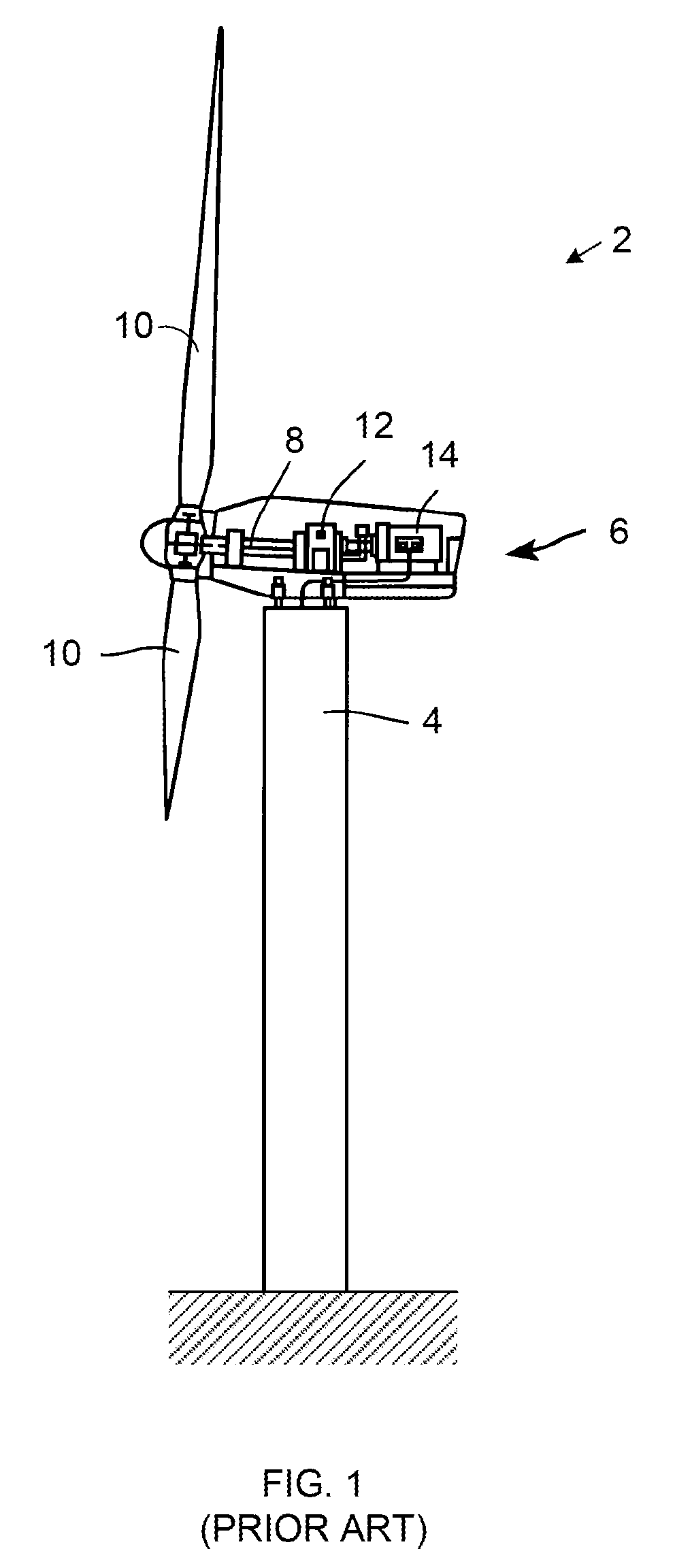Active damping of wind turbine blades
a technology of active damping and wind turbine blades, which is applied in the direction of rotors, electric generator control, vessel construction, etc., can solve the problems of more drag, more noise-causing turbulence, and wind turbine noise still a major obstacle to implementation
- Summary
- Abstract
- Description
- Claims
- Application Information
AI Technical Summary
Benefits of technology
Problems solved by technology
Method used
Image
Examples
Embodiment Construction
[0014]FIGS. 2 and 3 are schematic, partial cross-sectional view of a wind turbine blade 20 for use with the wind generator shown in FIG. 1, or any other wind turbine. For example, the blade 20 illustrated in FIG. 2 may replace any and / or all of the conventional blades 10 illustrated in FIG. 1. In the illustrated examples, the turbine blade 20 includes a main body 22 and a trailing edge cap 24 as disclosed in copending U.S. patent application Ser. No. 11 / 193,696 (Attorney Docket No. 167650). corresponding to Patent Publication No. 2007 / 0025858. However, the technology discussed below may also be applied in a variety of other configurations, including, but not limited to directly to the main body 22 of the blade 20, without the trailing edge cap 24.
[0015]In the illustrated examples, the blade 20 includes a sensor 26 arranged upstream from a trailing edge 28 of the blade 20, opposite from the direction of airflow over the corresponding surface of the blade, for measuring an airflow cha...
PUM
 Login to View More
Login to View More Abstract
Description
Claims
Application Information
 Login to View More
Login to View More - R&D
- Intellectual Property
- Life Sciences
- Materials
- Tech Scout
- Unparalleled Data Quality
- Higher Quality Content
- 60% Fewer Hallucinations
Browse by: Latest US Patents, China's latest patents, Technical Efficacy Thesaurus, Application Domain, Technology Topic, Popular Technical Reports.
© 2025 PatSnap. All rights reserved.Legal|Privacy policy|Modern Slavery Act Transparency Statement|Sitemap|About US| Contact US: help@patsnap.com



